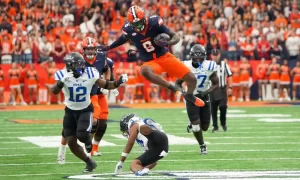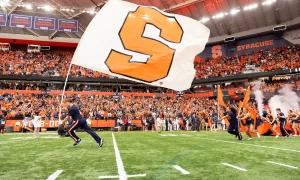When people think of the NFL, Premier League, NBA, or IPL, they typically envision thunderous stadiums, last-minute plays, and legendary performers. But behind the cheers and trophies is a much more calculated machinery: the business machine that drives it all. Today’s sports leagues are not only contests — they’re multi-billion-dollar businesses, carefully crafted to create, distribute, and multiply revenue on a global scale.
From broadcasting rights to team worth, merchandising to analytics, modern sports leagues are more corporate than traditional clubs. Success is fueled by strategic growth, brand development, worldwide reach, and aggressive monetization of every fan touch point. It’s a playbook that reaches far beyond the playing field — and is revolutionizing how we engage with sports altogether.
Media Deals, Sponsorships & Sports Betting: The Financial Core
For the majority of leagues, television and online rights generate the bulk of revenues. Indeed, the fight to screen games is becoming a war of money. International media giants compete for rights to broadcast top division leagues, with the Premier League, NFL, and NBA all reaping the rewards of multi-billion-pound deals.
Streaming services have joined the fray, poaching legacy networks by going after younger, more digitally native viewers. Amazon, Apple, and YouTube have all begun to sign up for exclusive game packages, expanding the way people watch sports content.
And then, naturally, there is the exponential growth of sports betting that has permeated so deeply into the contemporary viewing experience. Melbet’s live odds, team statistics, and game props — all the things that create new levels of interaction and new streams of revenue. The sports wagering industry doesn’t merely respond to sports — it’s now integrated into the manner in which leagues merchandise and market the product. In reality, sports betting sits squarely in the middle ground of how supporters live through contemporary games, blending contemporary thrills with anticipation entertainment. Sites consciously collaborate with leagues and TV broadcasters, developing proprietary material and offering that surf game action momentum, further filling out the business loop.
Where the Money Goes: League Revenue Split
Money comes into sports leagues from an array of sources — but where, precisely, is it headed? A closer look at the drivers of revenue reveals just how interdependent the ecosystem is.
| Revenue Stream | Description | Impact on Leagues |
| Broadcasting Rights | Deals with TV and streaming platforms | Largest revenue source for most leagues |
| Sponsorships | Brand partnerships and jersey deals | Boosts exposure and commercial power |
| Ticket Sales | In-stadium attendance and season packages | Still vital for team-level income |
| Merchandise | Apparel, collectibles, and team gear | Builds global brand identity |
| Digital Engagement | Subscriptions, gaming, content monetization | Rising sources through social platforms |
One fuels the other. Superstars drive jersey sales, which drives sponsorship value. Viral game moments fuel online activity, which drives subscriptions to streaming. And so on — every win, loss, and buzzer-beater is interpreted as a marketable moment.
This cycle is why leagues are spending money on AI-powered data analysis and mobile-first platforms. They don’t just want to know how many fans want something; they want to know what, and when. More data yields smarter marketing, better monetization, and smarter fan retention strategies.
Expansion, Access, and the Role of Tech
One of the most significant changes recently is the worldwide push. Not only are top leagues happy with home supremacy — but they also demand world allegiance. The NBA has made significant gains in Africa and Asia. European soccer clubs now have the U.S. and China as preseason tour destinations. And the NFL just keeps dipping its toes in London, Germany, and elsewhere.
But building a league’s fan base isn’t just shipping teams across continents. It’s also making it simple for people to get involved — whether in Brazil, Bangladesh, or Belgium. And technology plays a role.
Mobile sports infrastructure in modern days runs on mobility. Mobile gambling, fantasy games, and streaming packages are designed for the mobile fan. This is precisely why there are sites like the MelBet mirror link, which allow clients in blocked areas to view sites, place bets, and view games online live. Such applications demonstrate how the virtual aspect of fandom does equally as much as the physical side.
With the world opening up to markets, it is good, high-speed connectivity that becomes the key to maintaining fan bases — and collecting steady revenues from them.
More Than a Game: Sports as Global Enterprises
Sports that used to be believed to be localized to the playing field are now international business networks that shape fashion, technology, politics, and even education. Players are brands, stadiums are property developments, and championships are advertising platforms.
Franchises are now measured like start-ups, with prices established through long-term development, brand worth, and web presence. A number of the NBA franchises have moved above the $5 billion threshold, while European football titans are negotiating kit deals for hundreds of millions on a daily basis. It’s a new world, and the scoreboard is no longer the sole piece of data being monitored.
One thing is certain: behind every dunk, home run, or goal is a complex machine — one designed not only to entertain but to survive. Although passion generates the operation in the world of sports today, commerce powers the league.


















